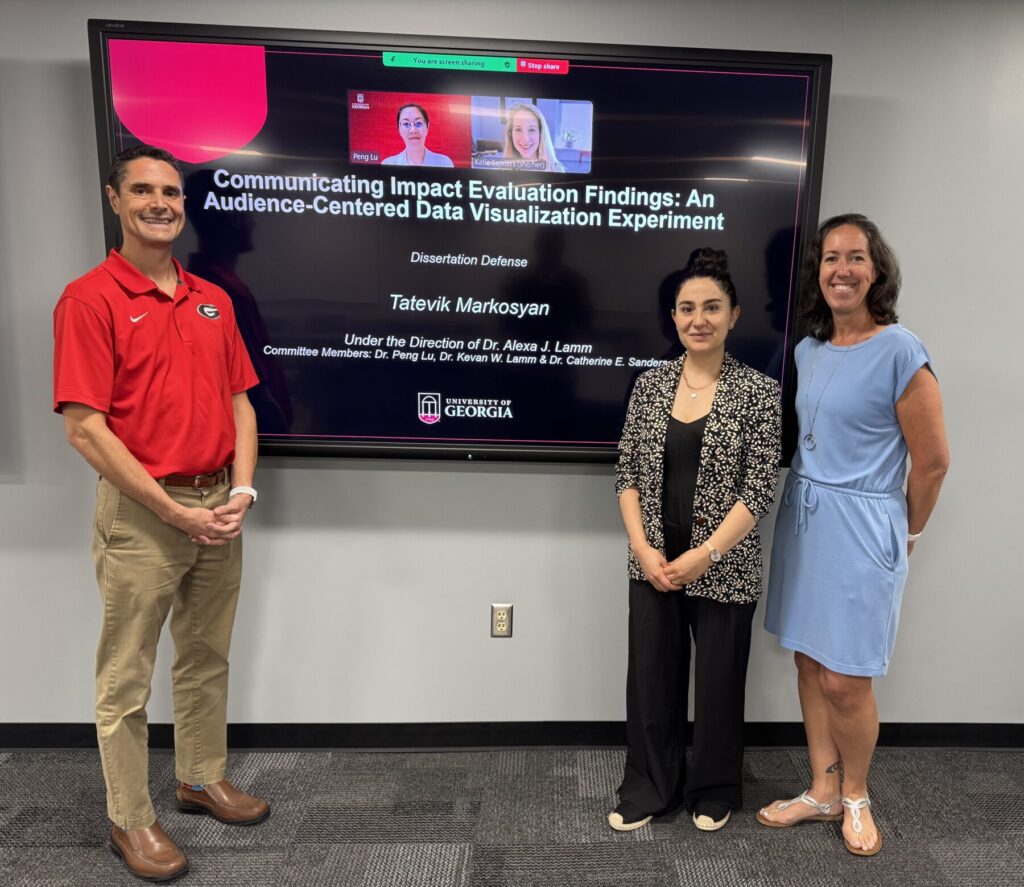The Lamm Lab is thrilled to celebrate the successful defense of Dr. Tatevik Markosyan’s dissertation, “Communicating Impact Evaluation Findings: An Audience-Centered Data Visualization Experiment.” In an age where data is abundant but trust is fragile, how we communicate evaluation findings can make or break public understanding and engagement. Dr. Markosyan’s research tackled a critical question: How can we better communicate complex evaluation findings to diverse audiences in ways that are both clear and trustworthy?
Her work focused on interdisciplinary research and extension initiatives—projects that often involve multiple stakeholders and have far-reaching societal impacts. Yet, the findings from these initiatives are frequently underutilized due to ineffective communication strategies. She was supported by a stellar committee made up of Dr. Alexa Lamm (chair), Dr. Peng Lu, Dr. Kevan Lamm, and Dr. Katie Sanders (NC State).

The Experiment: Visuals, Trust, and Understanding
Dr. Markosyan conducted quantitative experimental design. These respondents were shown evaluation findings using various formats—traditional text, graphs, and infographics. The goal? To understand how different formats influenced:
- Cognitive processing (how well people understood the information)
- Trust in the organization presenting the data
- Attitudes toward the scientific source
Key Findings
- Graphs significantly improved cognitive processing, helping people better understand the data.
- Infographics, while visually appealing, did not consistently outperform other formats in terms of trust or comprehension.
- Trust in the organization emerged as the most powerful factor influencing how people perceived the credibility of the scientific source.
These insights underscore a crucial point: visual clarity alone isn’t enough. Without organizational credibility and transparent communication, even the most beautifully designed visuals may fall flat.
Implications for the Field
Dr. Markosyan’s research offers a roadmap for evaluators, science communicators, and interdisciplinary teams:
- Design evaluation findings with the audience in mind: Tailor visuals to be culturally responsive and accessible.
- Build trust proactively: Transparency and consistency in communication are key to fostering long-term credibility.
- Go beyond aesthetics: Effective communication is not just about looking good—it’s about being understood and believed.
A New Doctor, A New Chapter
Dr. Markosyan’s work is a timely reminder that how we communicate is just as important as what we communicate. Her dissertation not only advances academic understanding but also provides practical strategies for anyone working to bridge the gap between science and society.
Congratulations, Dr. Markosyan, on this incredible achievement! Your work will undoubtedly inspire more thoughtful, inclusive, and impactful communication of evaluation findings in the years to come.